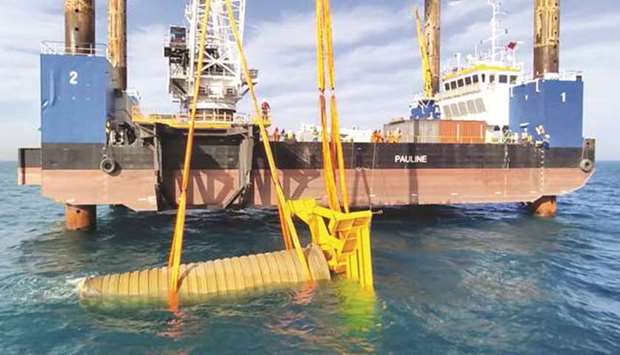The Mesaimeer Pumping Station and Outfall project will bring a facelift to the sewage management in Qatar while decreasing the surface water level and reducing pumping costs in construction projects across the country.
Ashghal has informed that the project will be completed by the end of this year.
The main tunnel will connect the existing and future drainage networks.
The tunnel will operate to drain surface water from sub-networks located in different areas, spread over an estimated 170sq km area, and minimise rainwater catchments, especially in tunnels, as it is connected with rainwater drainage networks in 22 tunnels for vehicular traffic.
It will also help preserve the foundations of buildings by reducing waterlogging.
Once completed at a total cost of about QR920mn, the 10km long outfall will become an important step towards providing a sustainable solution for the discharge of surface and stormwater in the country.
The project will accommodate surface and storm water volumes received from the drainage networks located in different areas in Doha.
The water is treated according to the highest internationally-approved specifications, and then pumped 10km away from the seashore via the Mesaimeer pumping station and outfall tunnel.
The excavation of the outfall tunnel, at a depth of 15m below the seabed and about 3.7m in diameter, is considered a “major construction challenge due to the variable geology that increases the exposure to unexpected conditions”.
The excavation is carried using a highly-specialised tunner boring machine (TBM) that uses a technique called “Earth Pressure Balance”, and is designed to operate in a range of ground conditions in Qatar, and along the variable geology along the tunnel.
The TBM incorporates advanced technologies that ensure the efficiency of the drilling process, providing the maximum safety standards for tunnel workers and operators, as well as monitoring the work execution through all its stages.
The safety features include a “closed mode” feature, used in the case of ground deterioration to prevent water from entering the tunnel and thus protect the workers, in addition to rescue chambers that protect personnel during emergencies, fire detection and suppression, as well as emergency electricity generation systems.
Ashghal has informed that the project will be completed by the end of this year.
The main tunnel will connect the existing and future drainage networks.
The tunnel will operate to drain surface water from sub-networks located in different areas, spread over an estimated 170sq km area, and minimise rainwater catchments, especially in tunnels, as it is connected with rainwater drainage networks in 22 tunnels for vehicular traffic.
It will also help preserve the foundations of buildings by reducing waterlogging.
Once completed at a total cost of about QR920mn, the 10km long outfall will become an important step towards providing a sustainable solution for the discharge of surface and stormwater in the country.
The project will accommodate surface and storm water volumes received from the drainage networks located in different areas in Doha.
The water is treated according to the highest internationally-approved specifications, and then pumped 10km away from the seashore via the Mesaimeer pumping station and outfall tunnel.
The excavation of the outfall tunnel, at a depth of 15m below the seabed and about 3.7m in diameter, is considered a “major construction challenge due to the variable geology that increases the exposure to unexpected conditions”.
The excavation is carried using a highly-specialised tunner boring machine (TBM) that uses a technique called “Earth Pressure Balance”, and is designed to operate in a range of ground conditions in Qatar, and along the variable geology along the tunnel.
The TBM incorporates advanced technologies that ensure the efficiency of the drilling process, providing the maximum safety standards for tunnel workers and operators, as well as monitoring the work execution through all its stages.
The safety features include a “closed mode” feature, used in the case of ground deterioration to prevent water from entering the tunnel and thus protect the workers, in addition to rescue chambers that protect personnel during emergencies, fire detection and suppression, as well as emergency electricity generation systems.




